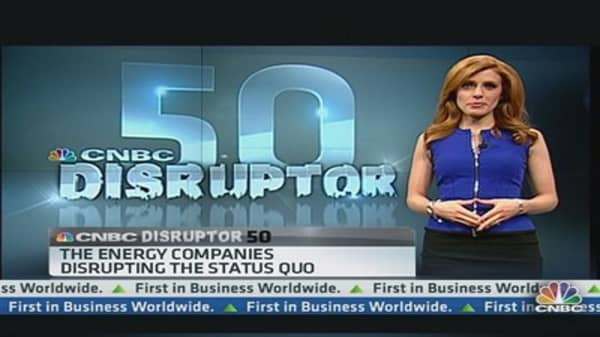(Read More: An Energy Model for the Future, From the 12th Century)
What's causing electricity demand to level off? Those 83 percent of U.S. consumers taking steps to save energy are a big part of it. In addition, an increasing number of consumers and businesses are taking electricity generation into their own hands—installing solar panels, building small-scale power plants and investing in on-site fuel cells.
Industry experts expect these distributed energy sources to deliver 5 percent to 20 percent of U.S. power supply by 2020.
With utility customers aspiring to use fewer electrons overall and wanting to power some of the remaining electrons on their own, what's a power company to do? The power company of the future will, like any savvy business organization, find ways to adapt to the aspirations and wants of its customers.
A growing number of industry pioneers are already demonstrating, through ingenuity and technology, what this reinvention might look like. They are showing how selling less power need not be self-destructive, but rather can be a core feature of the utility industry's 21st century business model.
And in the midst of the smart grid revolution, they are primed to use big data and technology to do it.
(Read More: Stop Paying Too Much for Textbooks, Now)
To help customers save energy, utilities will leverage the three thousandfold increase in electric usage data (via smart meters) to give them personalized insights and advice on how to trim energy bills, especially during peak seasons.
For innovative utilities, efforts like this aren't self-defeating but instead a compelling opportunity—to strengthen the relationship with their customers, to avoid the high costs of accommodating peak electricity demand and to strengthen their bottom line by qualifying for statewide efficiency incentives.
In an increasing number of U.S. states (18 by my count today), utilities in fact make more money on every dollar of electricity they help their customers to not use, than they make on the electrons they do use.
A smarter electric grid—and the unprecedented explosion in data that comes with it—also sets the stage for utilities to offer many more products and services to help customers manage their energy demand: Wi-Fi thermostats that enable consumers to control the temperature of their home remotely, effortlessly and energy efficiently; diagnostic assessments of a building's energy savings potential, based on its time-of-use electric usage data; and easy-to-understand rewards programs that give customers cash when they adjust their usage to take pressure off the grid.
(Read More: Health Care Needs a Dose of Social)
And as utility customers elevate their desire for self-generated clean energy, utilities need not sit on the sidelines. From Arizona to North Carolina, creative utilities are running programs that install and maintain smart-grid-ready solar panel arrays on customers' roofs.
The panels feed into the grid and the power company pays rental fees to those living or working under those roofs. The outcome is beneficial for all parties involved.
Embracing the energy priorities of tomorrow will enable power companies to move beyond delivering a simple commodity. Utilities will position themselves for success if they seek, as National Grid CEO Steve Holliday has suggested, opportunities to become "a total provider of energy services" and a "holistic manager of energy demand" for their customers.
If the first 100 years of the electricity industry has been about improving people's lives by delivering power, the next 100 years will be about giving them the power to use less.
—By Dan Yates, CEO of Opower.
Arlington, Va.-based Opower is a provider of customer engagement solutions for the utility industry, working with power companies so their consumers make smarter decisions about energy use.




